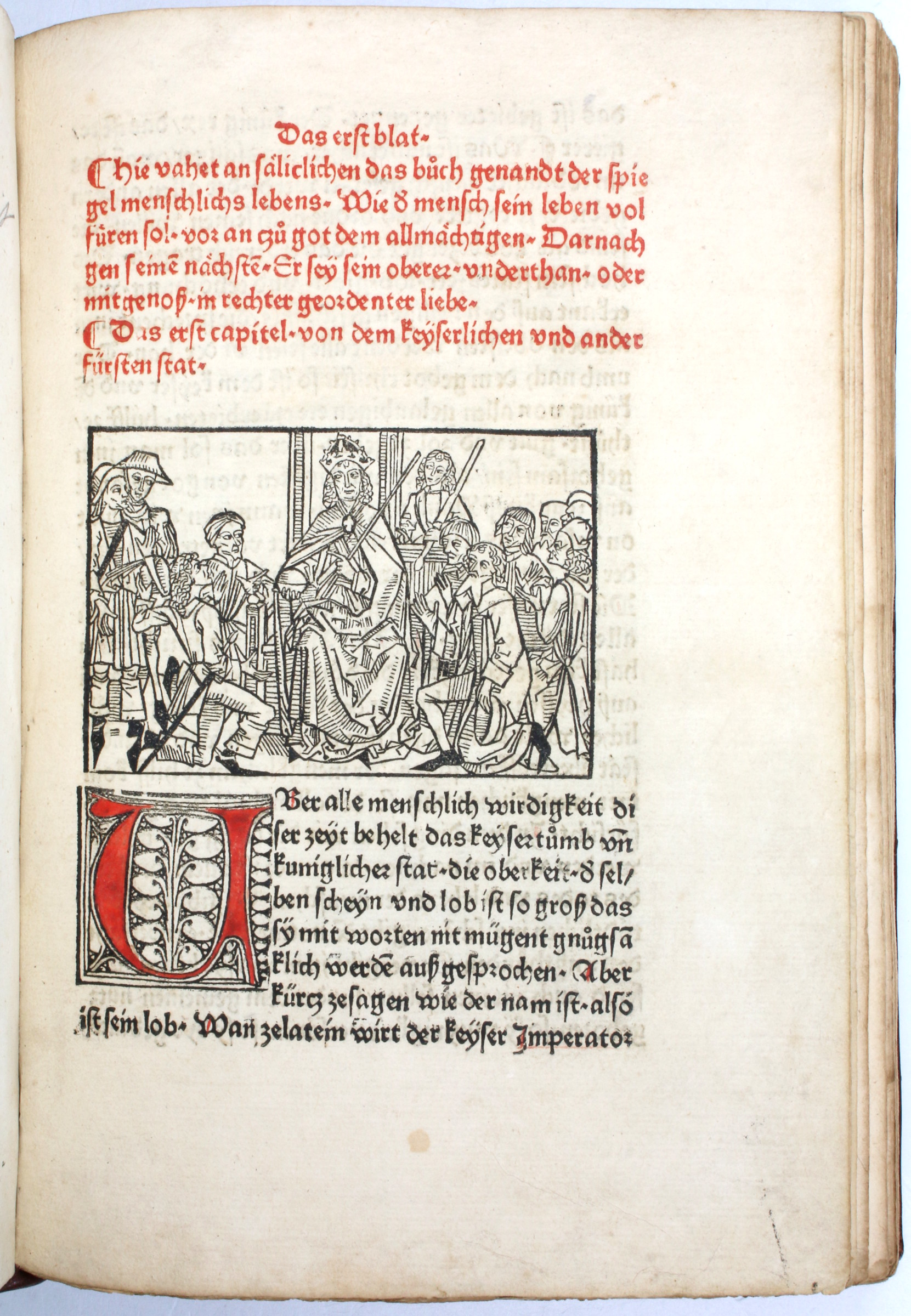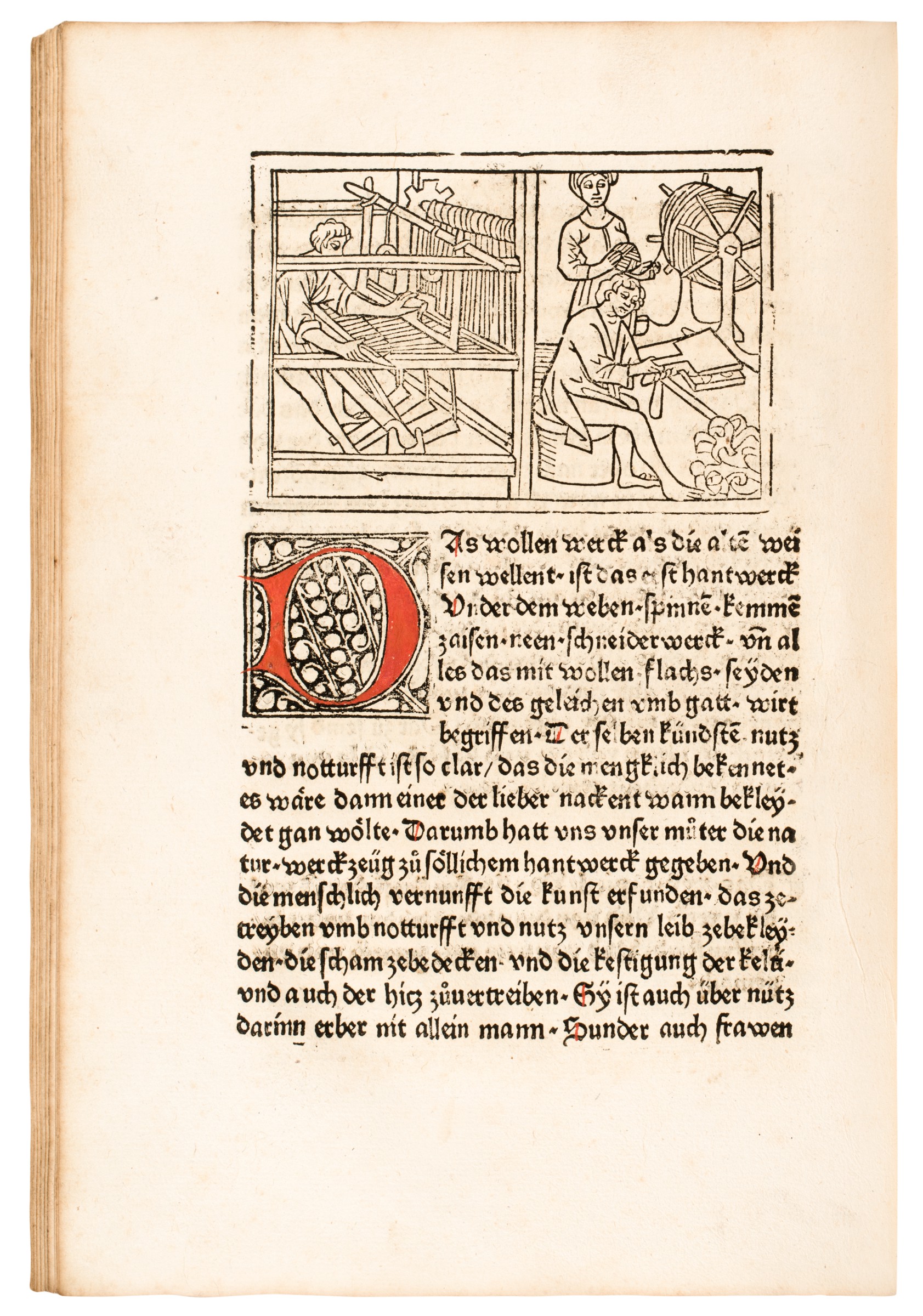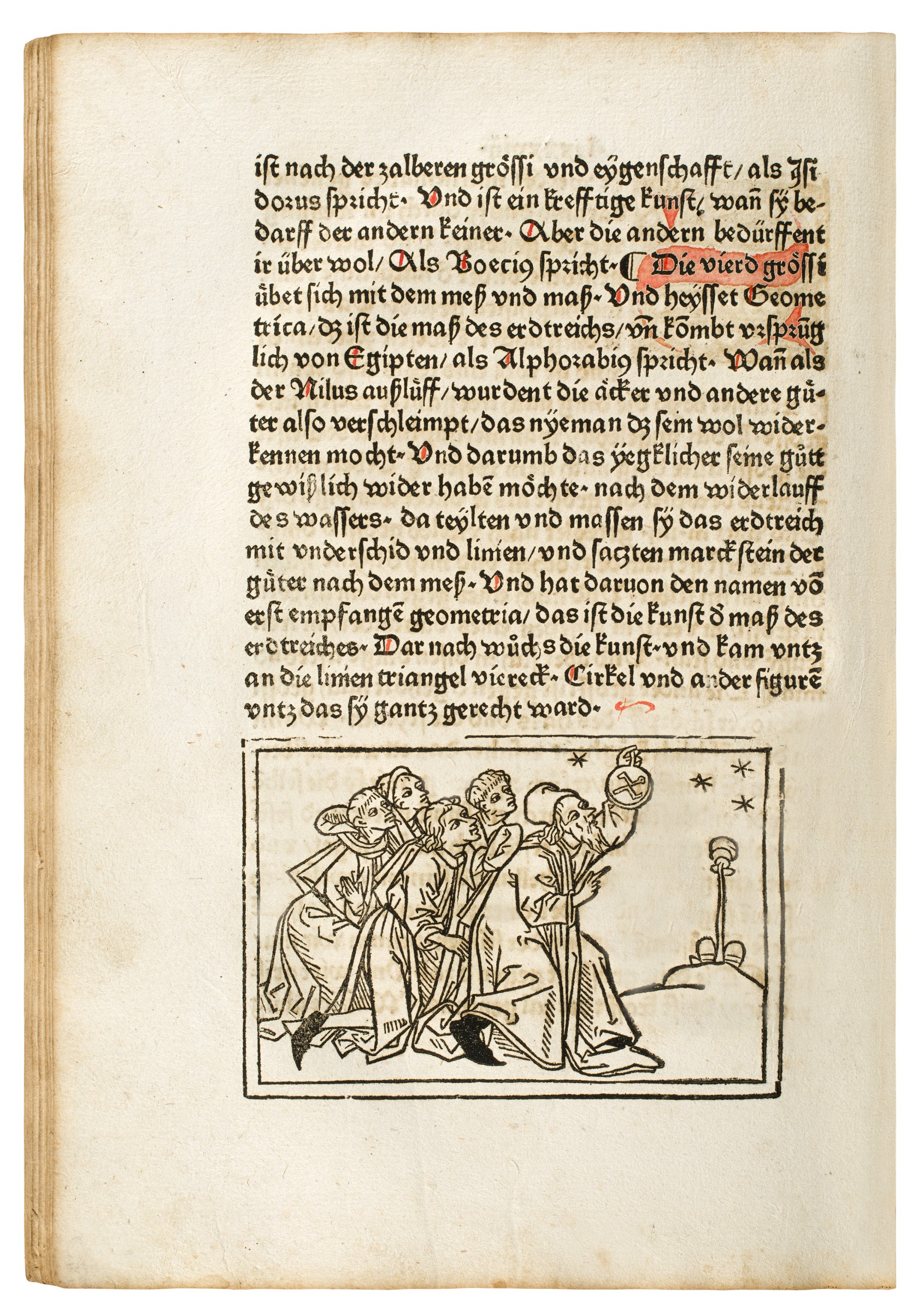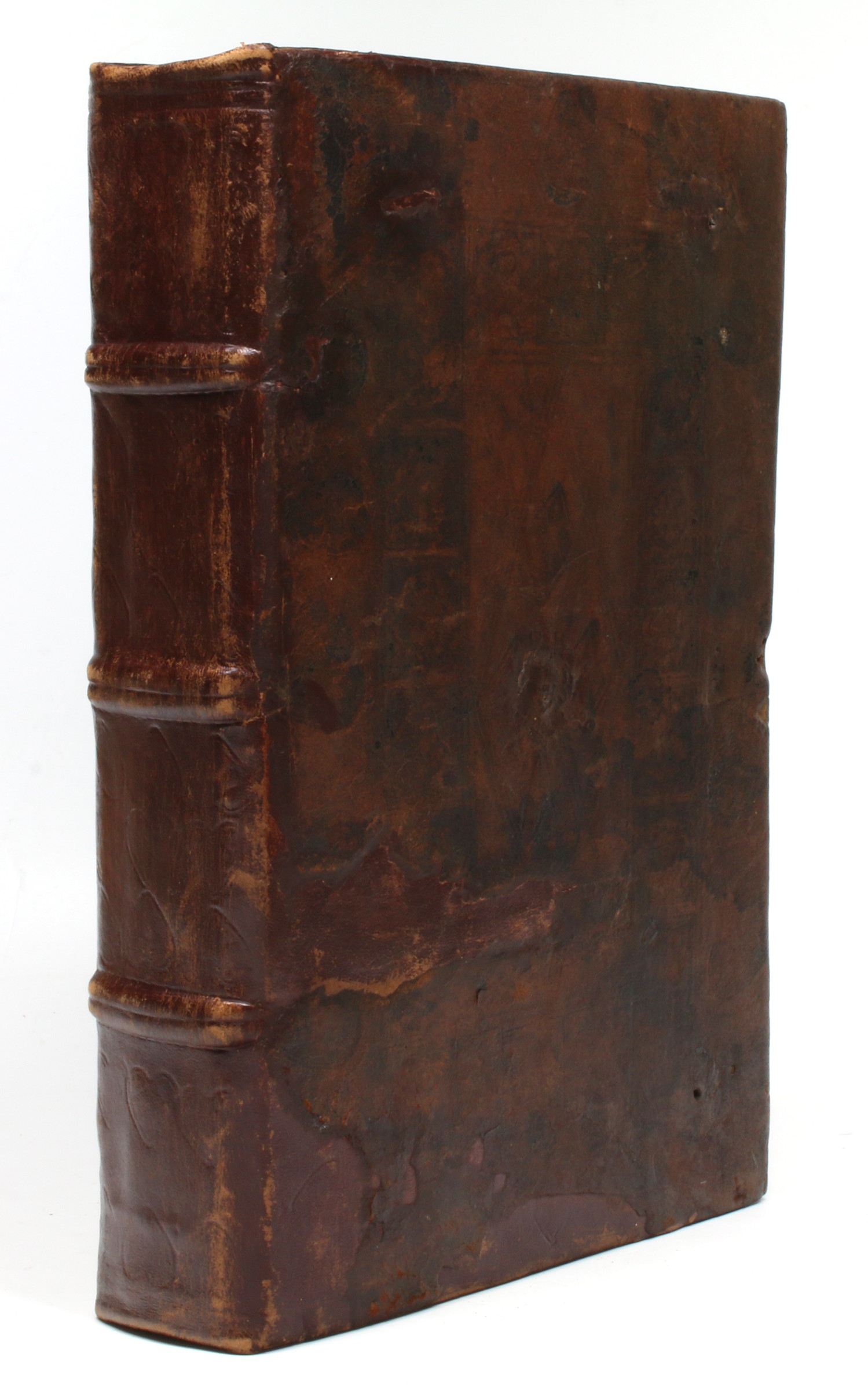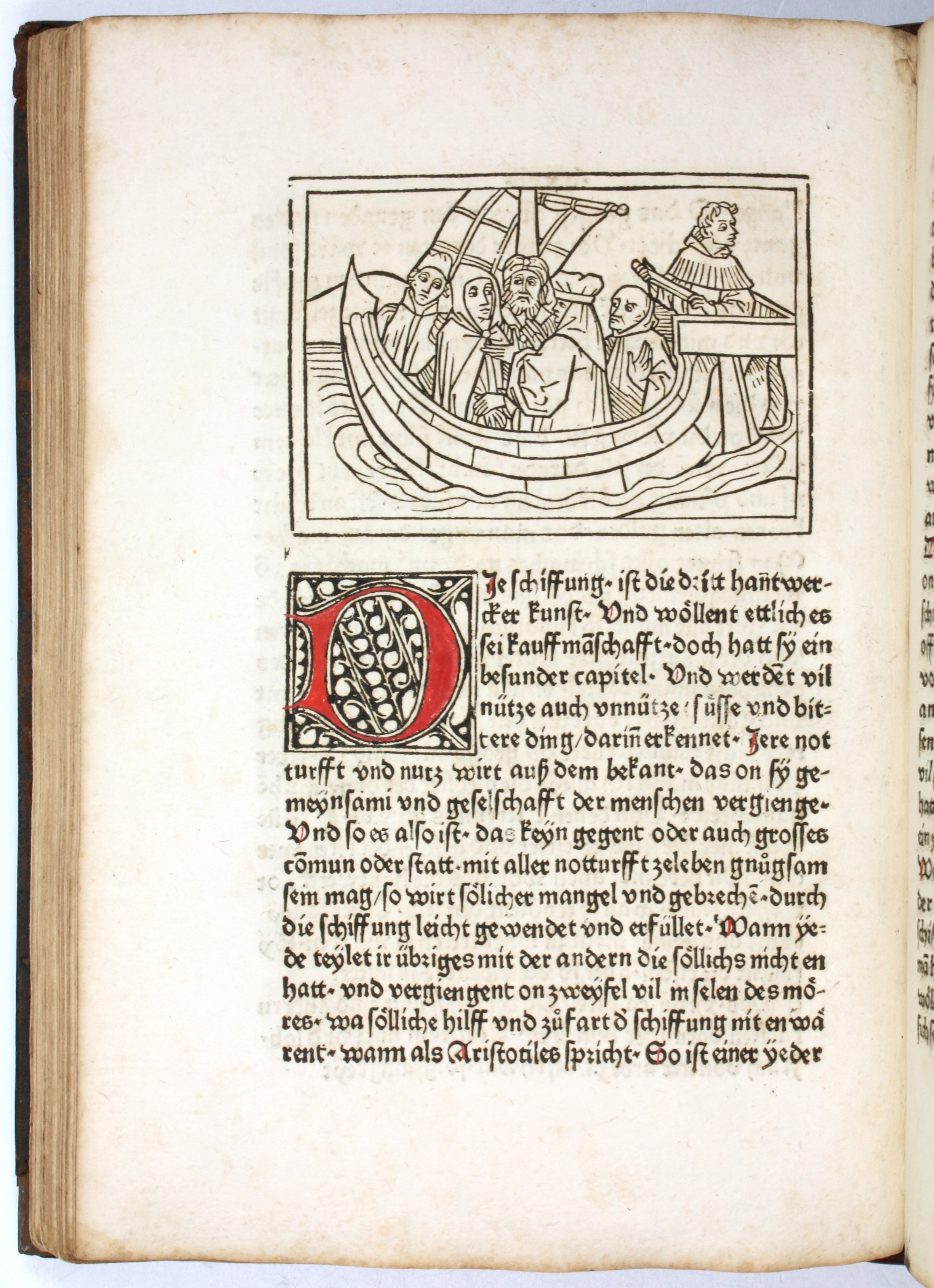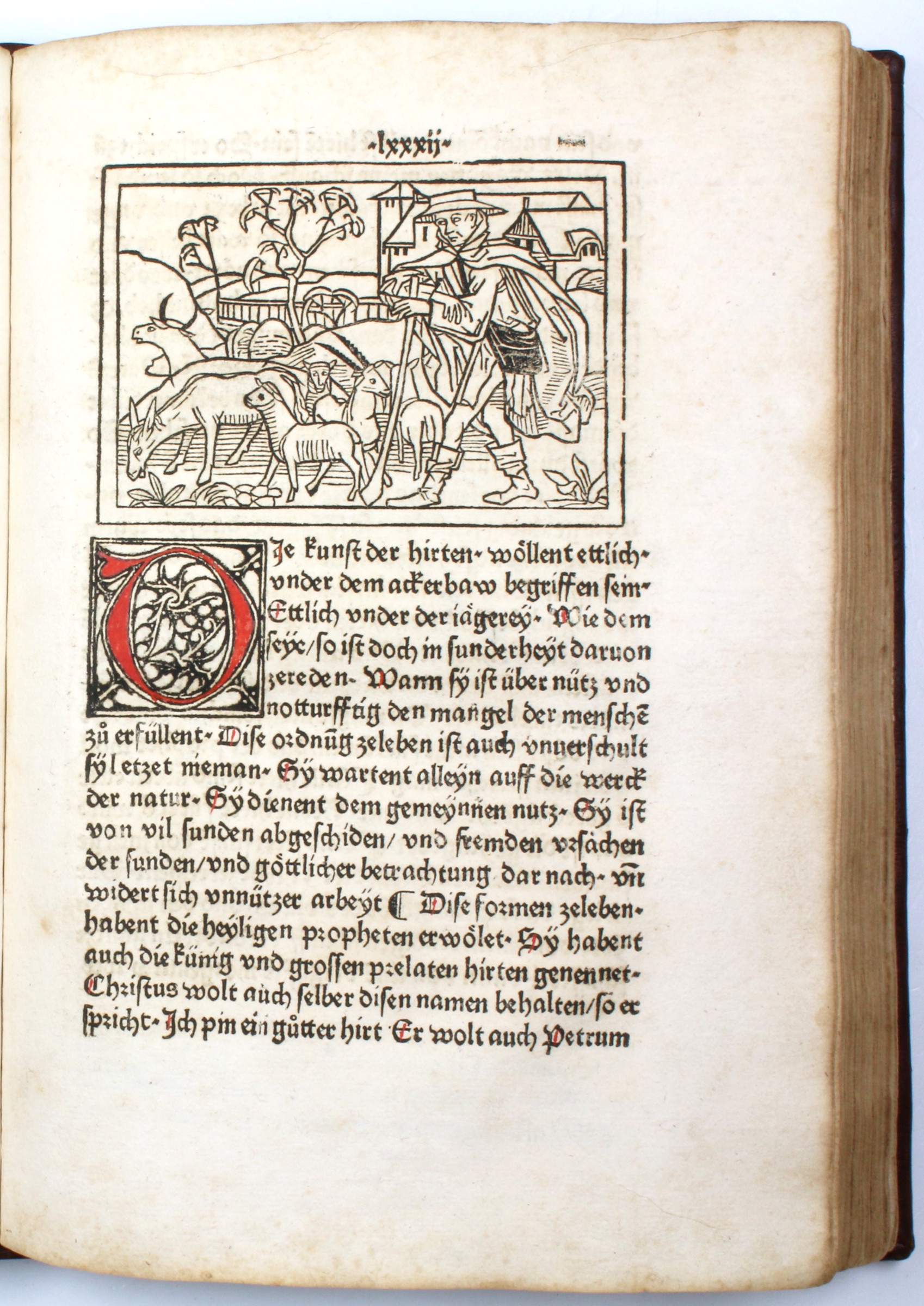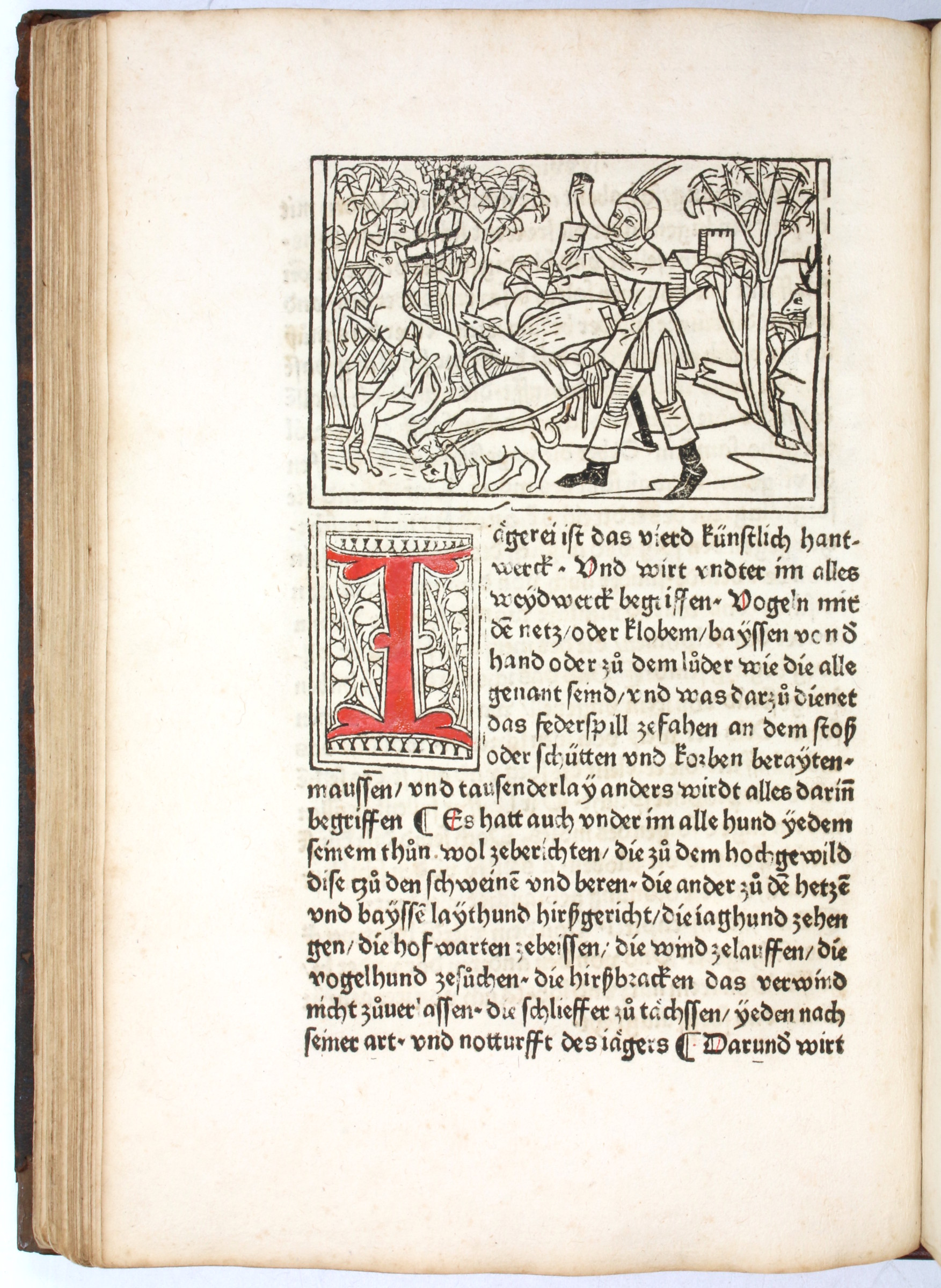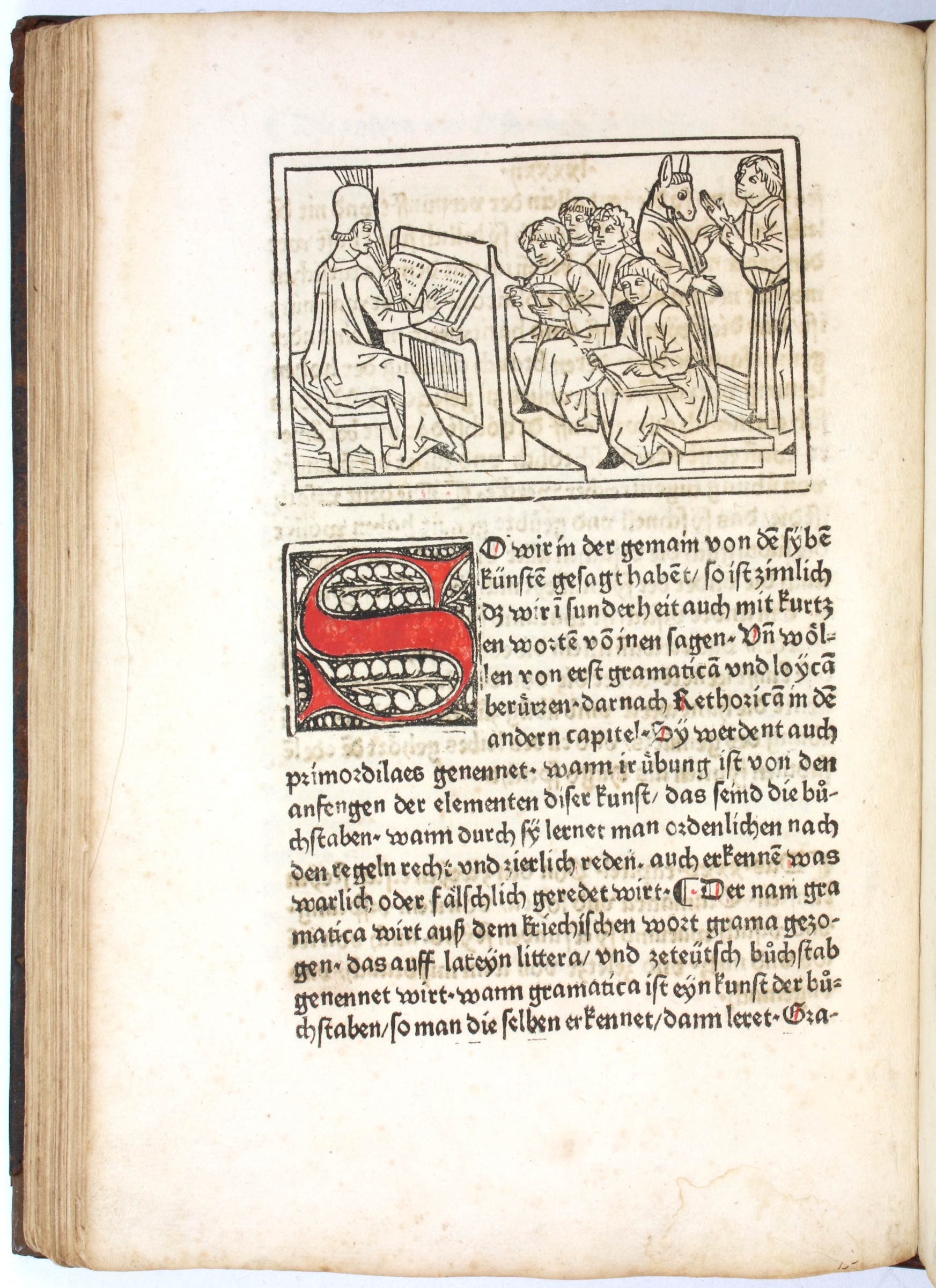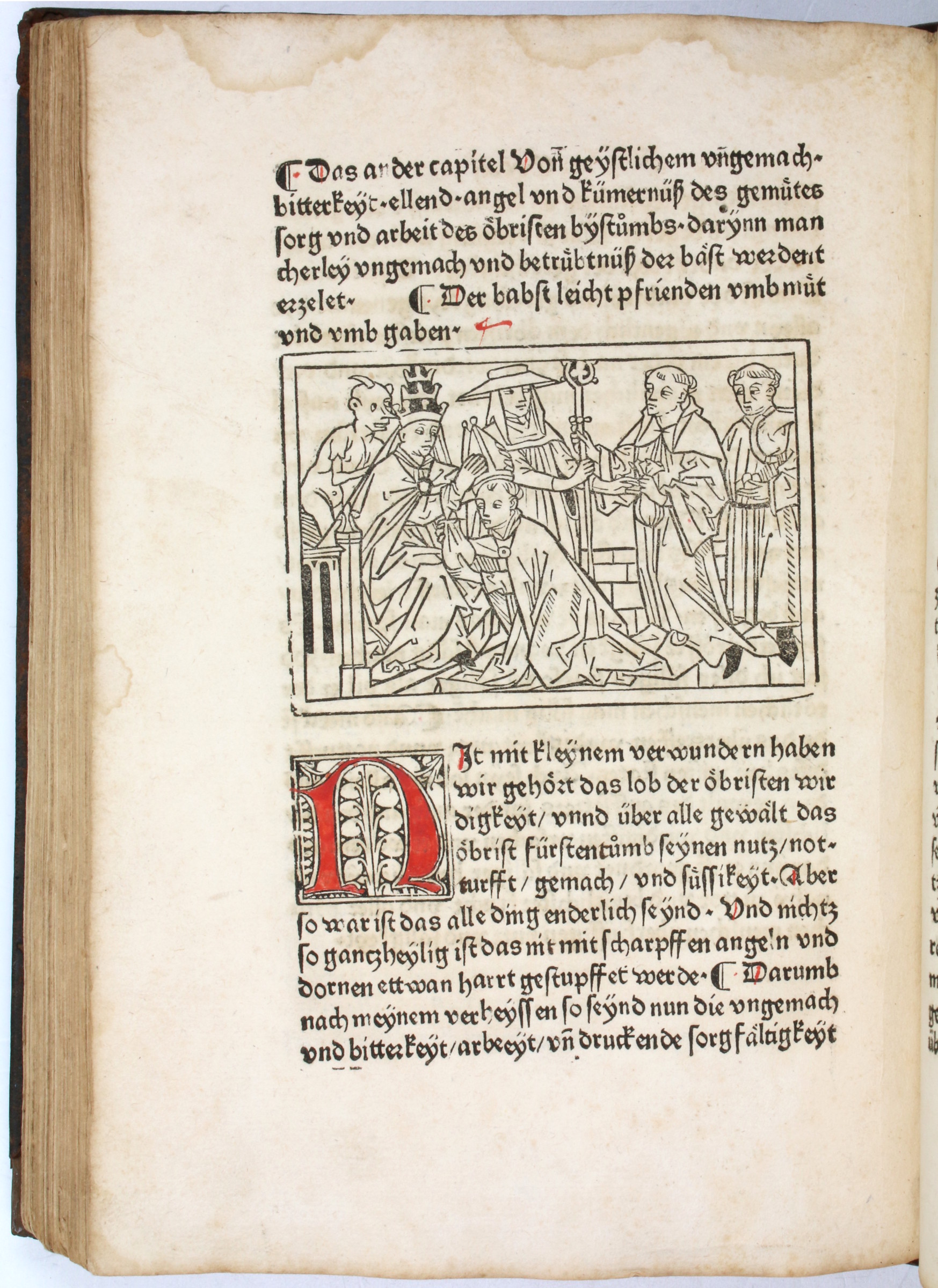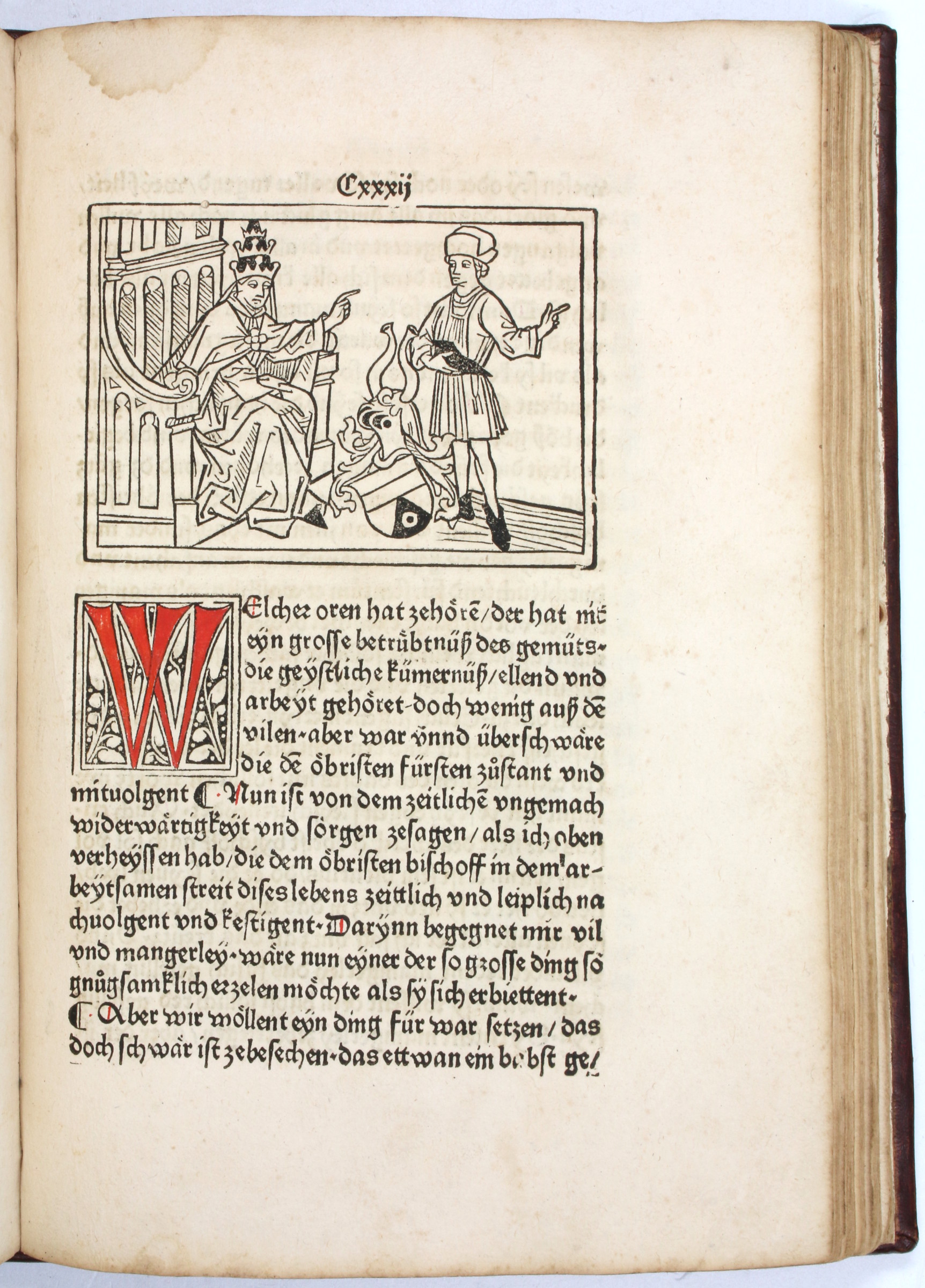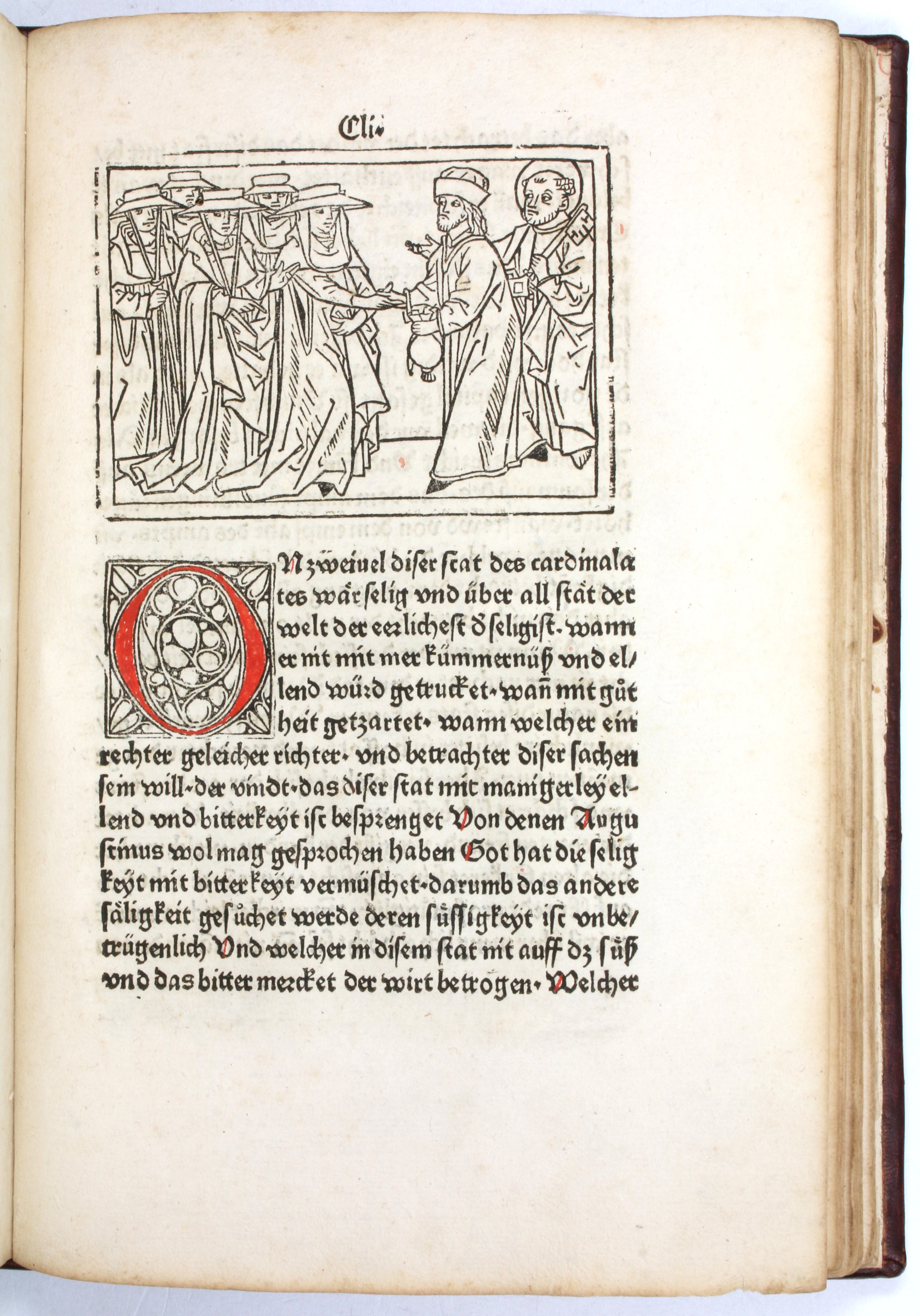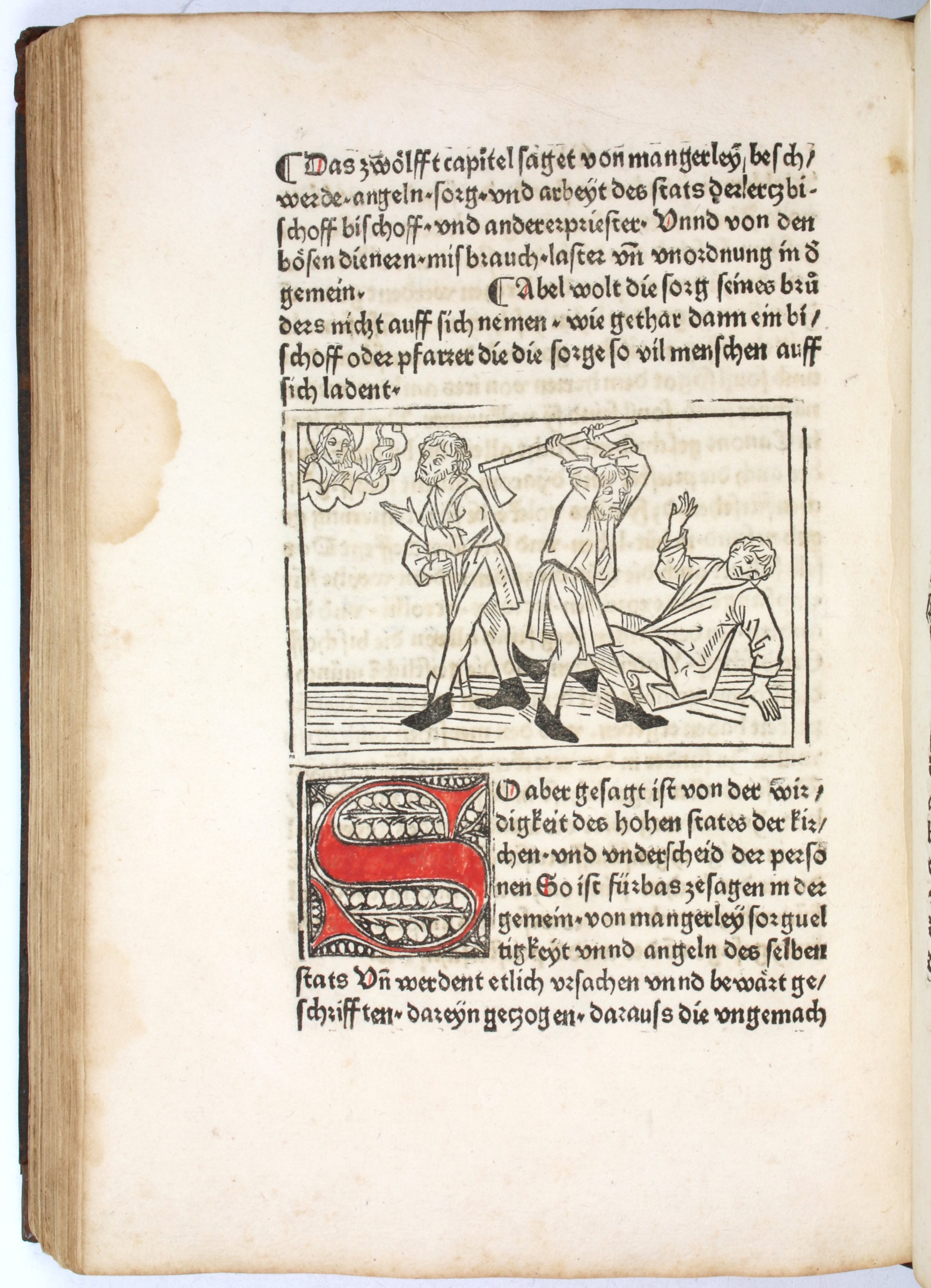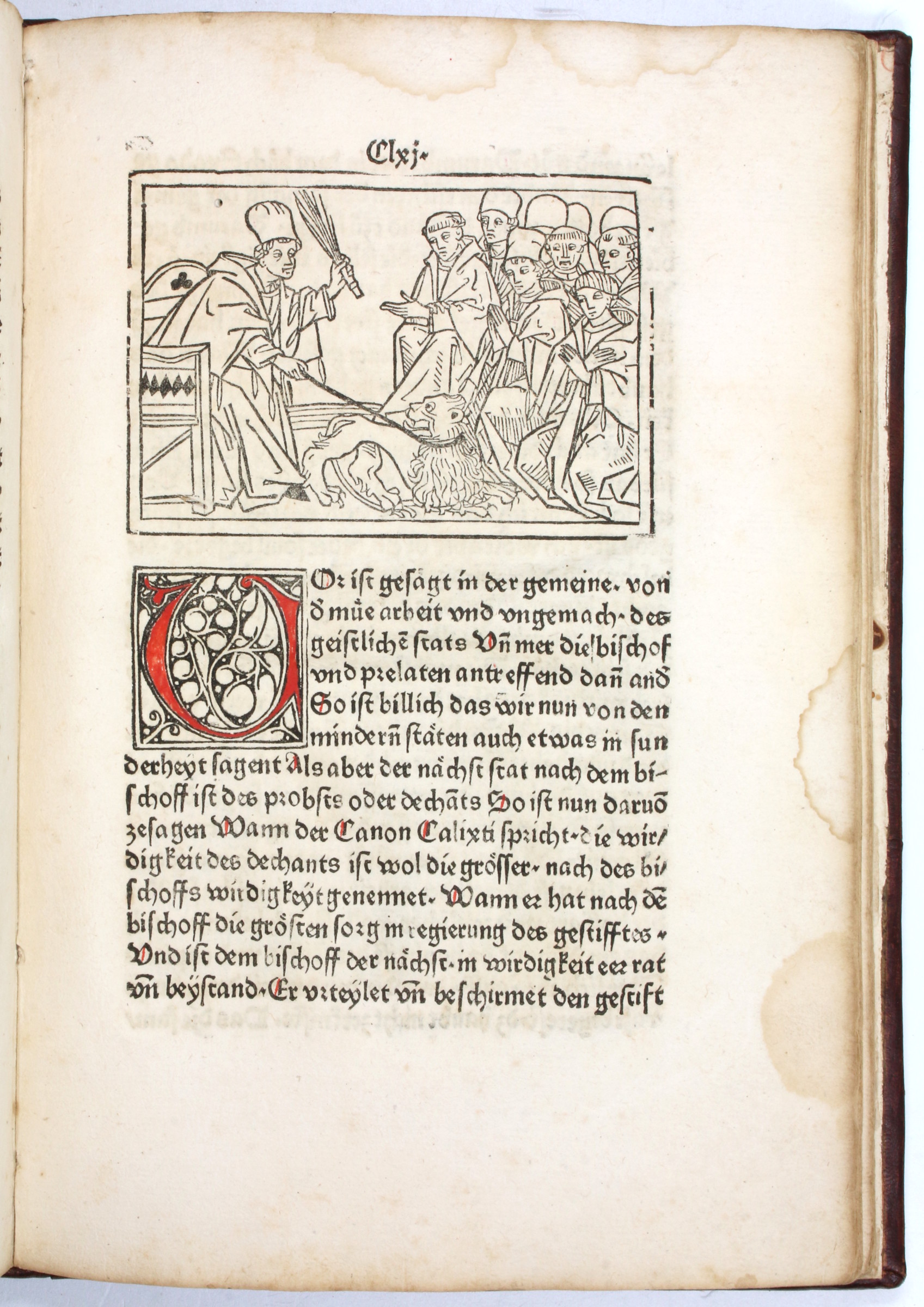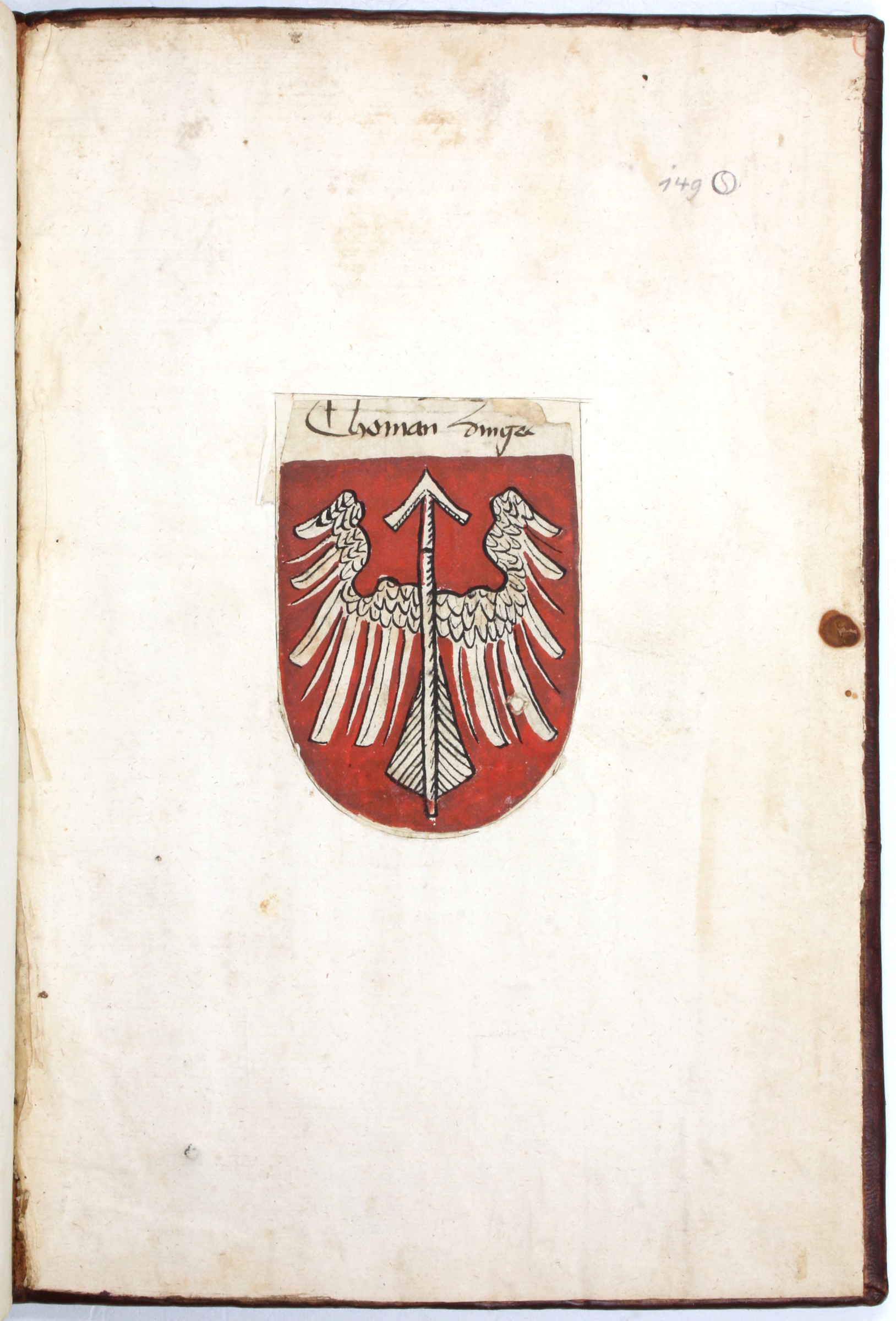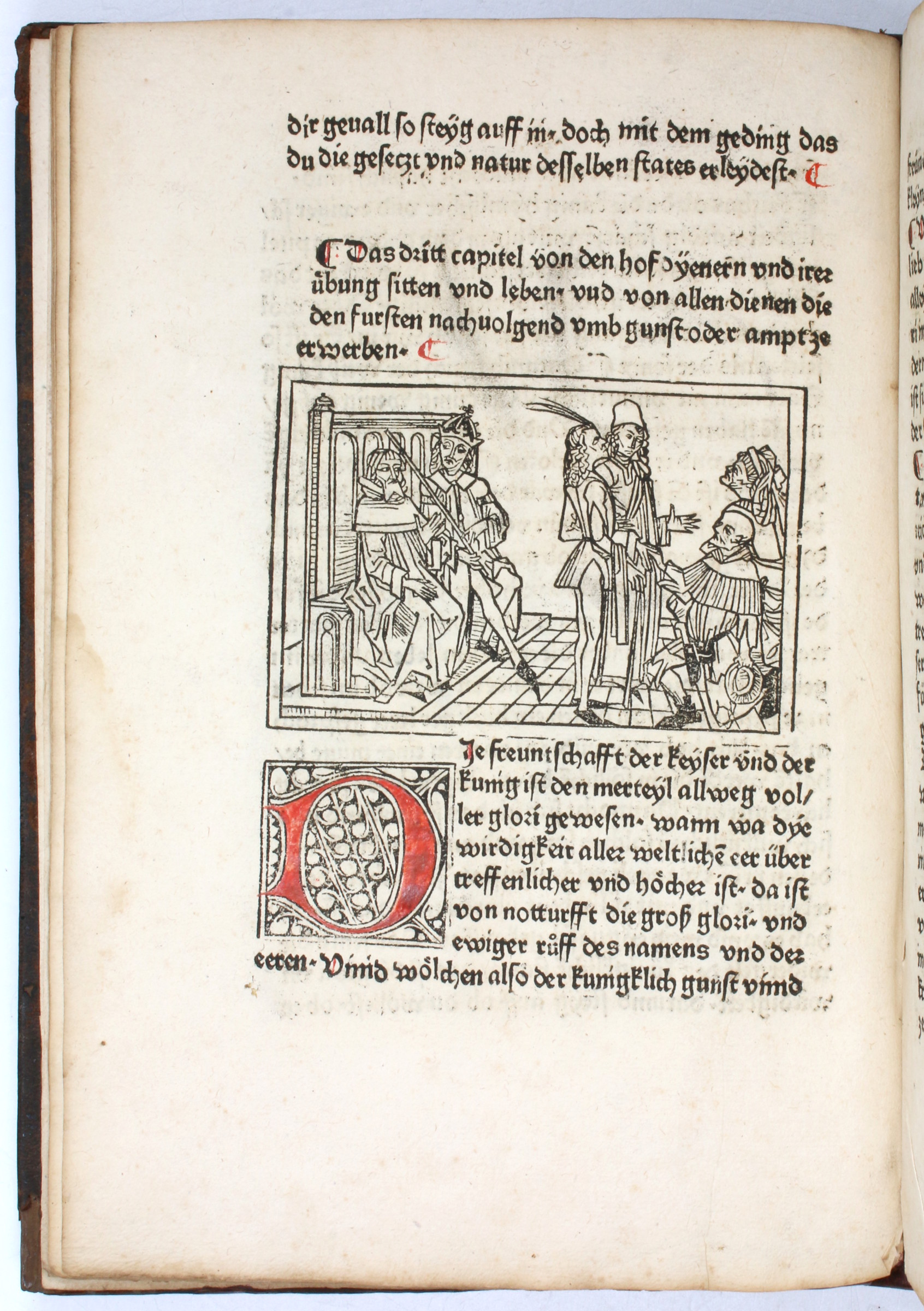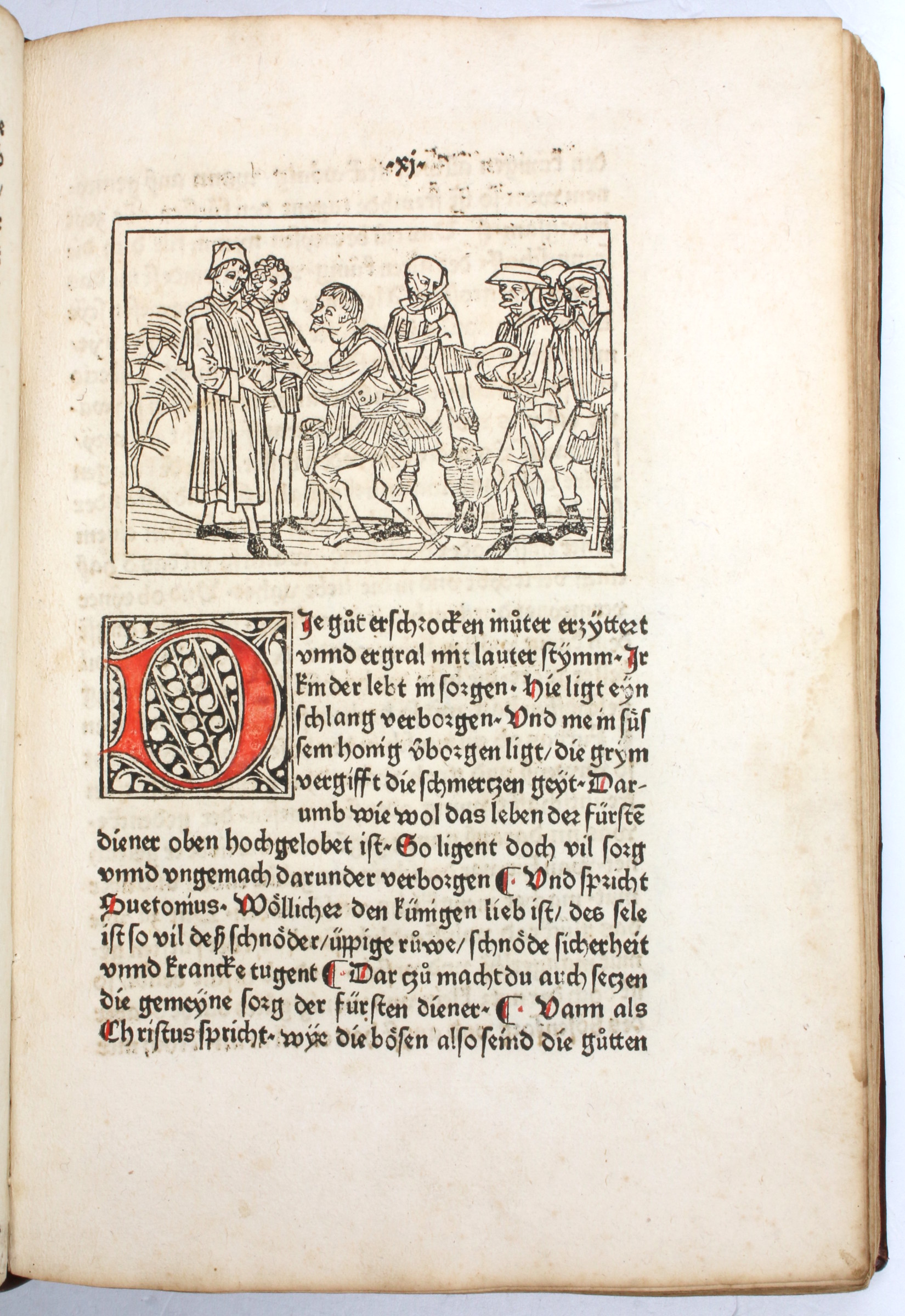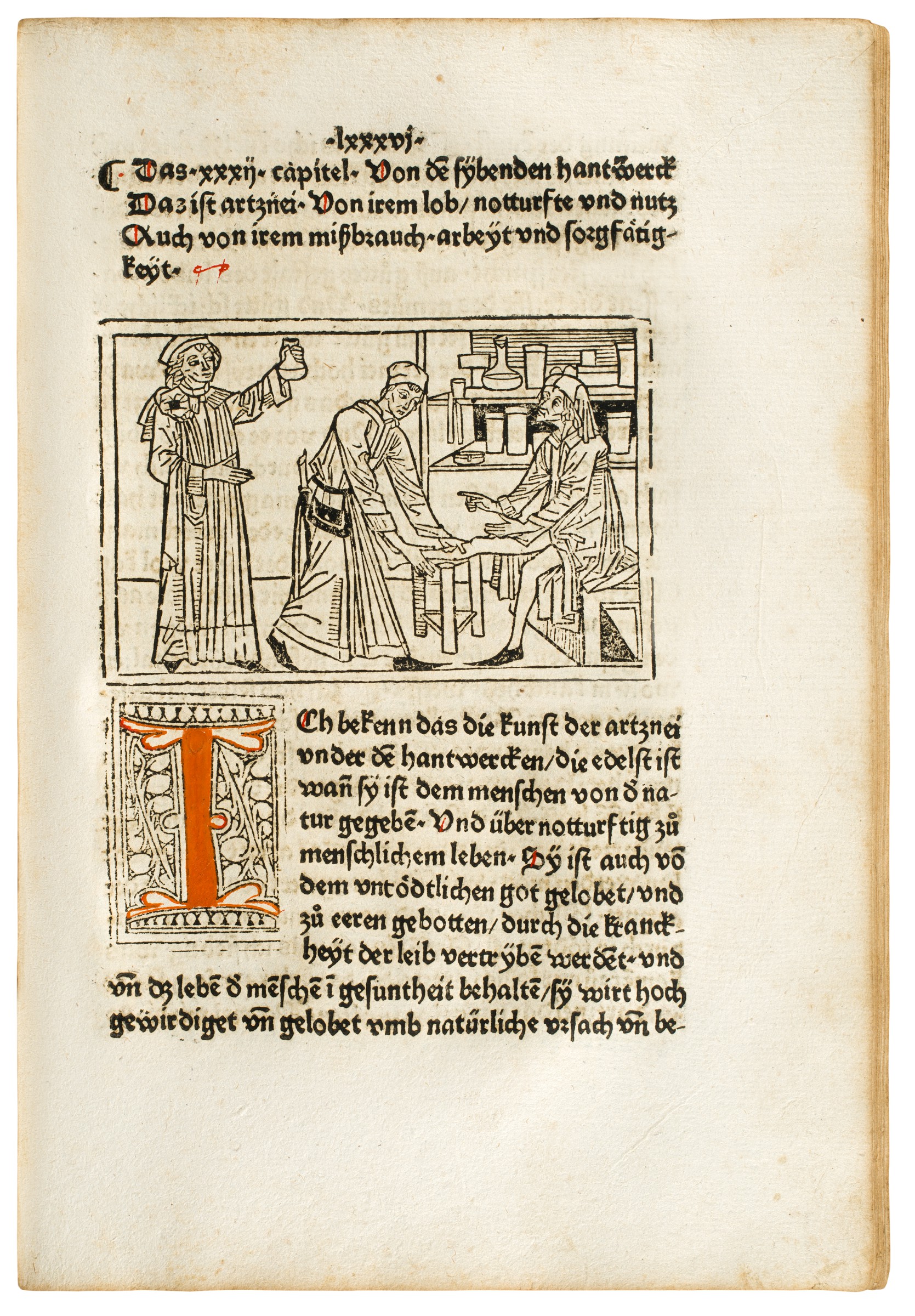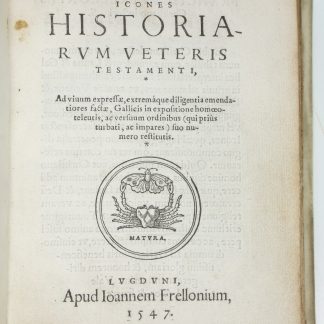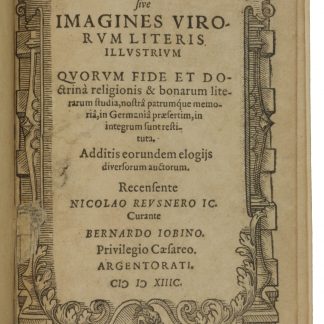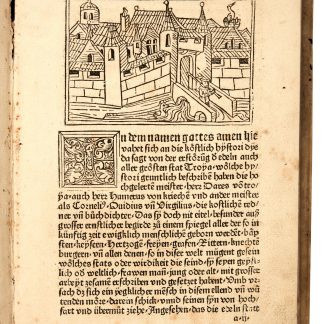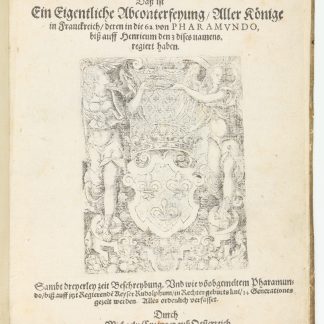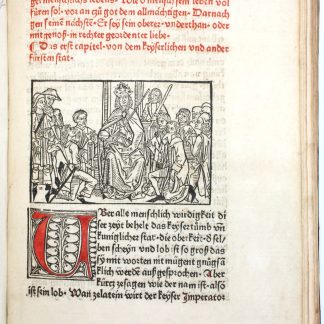An early guide on self-improvement
[Speculum vitae humanae - germanice]. Spiegel des menschlichen Lebens.
Folio. 207 ff. (of 210, without three blanks). Rubricated throughout, woodcut initials painted red. With numerous large woodcut Maiblumen initials and 55 woodcuts from 54 blocks, a few woodcuts partly coloured red. Contemporary brown calf over wooden boards, tooled in blind.
€ 165.000,00
Second German edition of the "Speculum vitae humanae" (Mirror of Human Life), a popular early modern work on the virtuous life. Designed as an aid to good decision-making, the text discusses the advantages and shortcomings of all the secular and ecclesiastical professions and estates of medieval society. For today's readers, the work provides a wealth of information on the cultural history and everyday life of the Middle Ages.
Rodrigo Sánchez de Arévalo (1404-70) was castellan of the Castel Sant'Angelo in Rome and bishop of Zamora in Spain. He dedicated his manuscript to Pope Paul II, and the first edition was printed by Rome's prototypographers, Sweynheim and Pannartz, in 1468. More than twenty editions of the popular didactical treatise followed in short order; while most were in the original Latin, there were also German, French, and Spanish translations.
The first German (and first illustrated) edition emerged from Günter Zainer's Augsburg press in 1476. The Ulm humanist and town physician Heinrich Steinhöwel (ca. 1411-79) completed his translation by 1474; his original manuscript is preserved in the Bavarian State Library (cgm 1137). He replaced Rodrigo's dedication by his own, addressed to Duke Sigismund of Tirol, which the printer Johann Bämler omitted in the present second German edition, also tightening the first two books. A third German edition would be printed by Peter Berger in 1488, also in Augsburg.
In discussing the benefits and obligations of man's secular and religious stations, Rodericus describes a wide variety of professions and trades, including medicine, law, husbandry, mechanics, mercantile trade, mathematics, and astronomy, as well as numerous noble and clerical occupations. Woodcuts show farmers tilling the fields (fol. LXI), the wool trade with spinners and weavers at work (fol. LXXIIIv), physicians treating a patient with his injured leg (fol. LXXXVI), and astronomers observing the stars with an astrolabe (fol. LXXXXVIIIv). For its fine illustrations, the first German edition was regarded as one of the most attractive of Zainer's books, and Bämler was able to re-used the blocks. On stylistic grounds, however, the woodcuts are attributed to artists based in Ulm rather than in Augsburg. At least two designers were responsible for the illustrations: while most are by the so-called Zamorensis Master, named for this work, six cuts are attributed to the Master of the Ulm Boccaccio (Weil 1923, pp. 27ff.). After Bämler had reprinted the cuts, omitting only two referring to the House of Habsburg and Austria, the blocks went to Lyon to appear in a 1482 French edition by Nicolaus Philippi and Marcus Reinhard ("Le Miroir de la vie humaine"), and then in a 1491 Spanish edition by Paul Hurus in Saragossa ("Spejo dela vida humana"). Berger's third German edition is illustrated with copies from the Augsburg predecessors.
The present second edition in German is even scarcer than the first: ISTC notes only fifteen copies worldwide, two of which in are the U.S. MRFH lists one more copy and three with unknown locations. The book is extremely rare in the trade: none of all three German editions are listed in ABPC.
1) Nuremberg, Thomas Zingel the Younger (d. 1482), with his painted coat of arms and his name on lower pastedown.
2) The Dukes of Arenberg (Arnim, no. 286).
3) Otto Schäfer collection, Schweinfurt (OS 149), acquired in November 1959 from August Laube, Zürich.
Folio (187 x 280 mm). 207 ff. (of 210, without three blanks *1, 6 and x6): [4], CCIII ff. (collation: *6-2, a-t10, v8, x6-1). Leaf a1, "Das erst blat" bound at front, before the four leaves register. 28-29 lines, type 1:145 (140)G, 8-line introduction on fol. I printed in red. Rubricated throughout, woodcut initials painted red. With numerous large woodcut Maiblumen initials and 55 woodcuts from 54 blocks by the Ulm Zamorensis Master and the Master of the Ulm Boccaccio, a few woodcuts partly coloured red. A large copy preserving some deckle edges. Contemporary dark brown calf over wooden boards, tooled in blind, a rosette stamp points perhaps to an Augsburg workshop (Kyriss workshop 90 = EBDB w001512), but only the upper cover bearing the original leather.
Binding considerably rubbed, other cover material renewed; former bosses and clasp missing; endpapers new, old bookplate window-mounted. Occasional slight browning, some marginal damp-staining, red initials bleed through pages, repaired wormholes on last few leaves.
H 13949*. Goff R-232. GW M38507. BSB-Ink S-67. Borm 2339. Oxford, Bod-Inc R-093. Klebs 858.2. Schreiber no. 5103. Schramm III, p. 20 & 26. ISTC ir00232000. Weil, Ulmer Holzschnitt (1923), 27 ff. and 107, note 47 (the artists in detail). Schmid, Augsburger Einzelformschnitt und Buchillustration, 1958, p. 43. MRFH 21290. Goedeke I, 370, no. 6. Verfasserlexikon² IX, cols. 269ff. Arnim, Schäfer (1984), no. 286. Heroes and Heroines (Jörn Günther, cat. 13, 2017), no. 9. Dietrich Kurze, "Lob und Tadel der artes mechanicae unter besonderer Berücksichtigung des speculum vite humanae des Rodrigo Sánchez de Arévalo (1467)", in: Handwerk in Europa, ed. Knut Schulz (1999), pp. 109-153, esp. 139-140.

